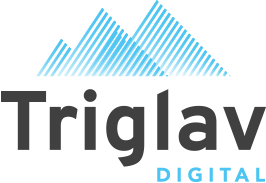Generational diversity
Today, four generations live side by side: Baby Boomers, Generation X, Millennials and Generation Z. Each bears the imprint of its era, shaped by distinct technologies and cultures. A real mix of experiences and visions that, far from being an obstacle, can become a driving force.
The arrival of Generation Z on the job market is raising questions among employers, but isn’t it rather a wonderful opportunity to capitalize on the strengths of each generation, celebrate their differences and create a unique synergy? Here’s a brief overview of these generations.
Baby Boomers (1946-1964) – Pillars of experience and dedicated mentors
Baby Boomers are the experienced pillars of modern teams. Attached to structure and direct communication, they bring a welcome stability to the fast-changing world of work. True workaholics, their irreproachable ethics can be a source of inspiration for younger generations. They tend to approach challenges without flinching and are dedicated to the success of the company and the team.
What makes them special is that they can take on the role of mentors. Their sound advice can guide the younger generation through a sometimes-uncertain professional world. And even if their numbers are dwindling, baby boomers still occupy an important place in modern teams, often in key positions. Their wisdom and dedication make them valuable assets for any company.
Generation X (1965-1980) – Independence, adaptability and leadership
At ease with traditional codes and technological innovations, this generation draws on the experience of baby-boomers and the agility of millennials. Aged between 40 and 55, they are the lifeblood of many companies. Generation X’s share of companies in Europe varies slightly from country to country but is generally between 30 and 40%.
Reliable and committed, Generation X is a safe bet for employers. Their in-depth knowledge of the world of work and strong work ethic guarantees consistent performance. When it comes to technology, this generation masters the Internet and its codes perfectly and keeps abreast of the latest trends.
Millennials (1981-1997) – Passion and impact on the world of work
Millennials are characterized by their independence and desire to make an impact on society. They aspire to use their autonomy to change the world. Their commitment to the workplace therefore largely depends on the culture and management style in place.
If a cause is close to their hearts, they can channel their passion and independence to achieve great things. If, on the other hand, they feel confined to a mere subordinate role, they are likely to look for other horizons. In fact, 49% of them are considering quitting their jobs within the next two years.
Their influence on the labor market is growing all the time: they already represent around 40% of the workforce, and this figure is set to rise. Only yesterday, they were mocked for their attachment to their smartphones, but today they are the lifeblood of the economy!
A workforce that embraces generational diversity is a symphony where every note is essential to the harmony of success.
Generation Z (1997-2012) – Digital natives, the driving force of tomorrow
This generation is often caricatured: addicted to their smartphones, unable to concentrate and only concerned about their image on social networks… But behind these stereotypes lies a talented and ambitious generation, with the potential to revolutionize the world of work.
Their main asset is their innate mastery of digital technologies. They have grown up with the internet and social networks and use them with disconcerting ease. For companies, this represents a tremendous advantage. They can be a source of inspiration for older generations, who can learn from them how to use technology to improve their work.
This generation is ambitious and determined. Two-thirds of them aspire to positions of high responsibility. They are also multitasking and adaptable, able to juggle multiple projects and adapt quickly to change.
Conclusion
As Generation Z enters the workforce, companies need to be prepared to welcome its members and capitalize on their unique skills. It’s important to create an open and inclusive corporate culture, where young talents can express themselves and flourish. By offering Generation Z opportunities for development and growth, companies can ensure a prosperous future.
Knowing how to use the strengths of different generations of workers can add a whole new dimension to teamwork, coaching, mentoring and hiring. But it also promotes staff retention. Putting the right people in the right positions to succeed is one of the most important aspects of developing employee engagement and creating an effective and happy workforce – a good mix of generations in your office can help you achieve this.

